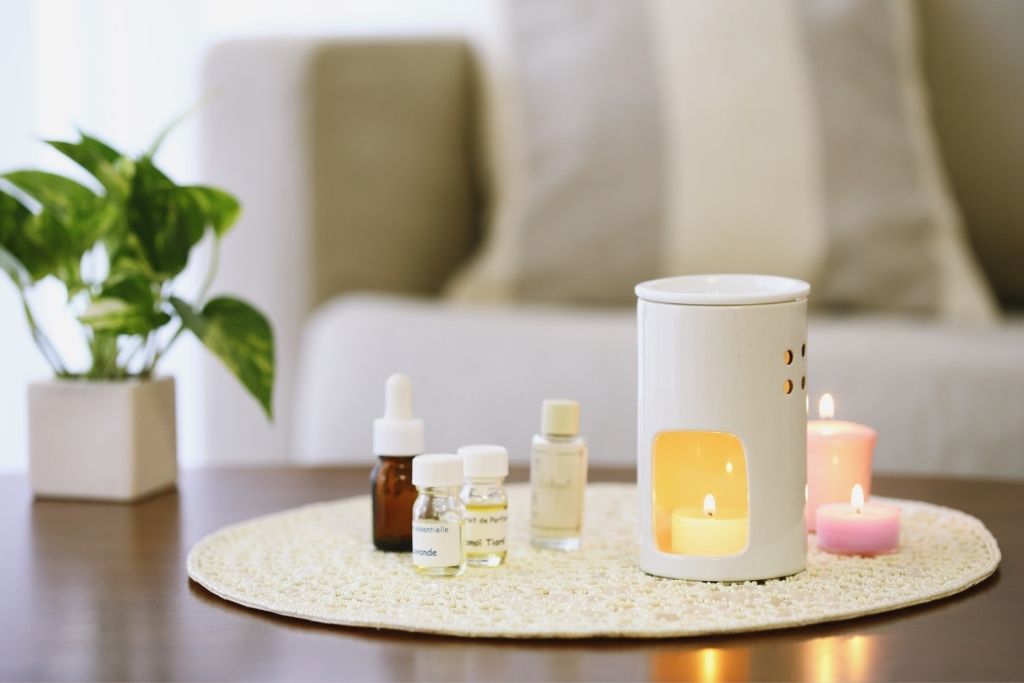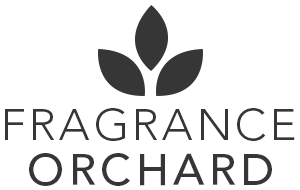High-quality fragrance oils are incredibly popular because they bring such variety and a real punch to wax melts, making them the go-to choice for countless people who want to freshen up their homes. They are generally safe, provided you stick to fragrance oils specifically formulated for wax, and you follow the directions exactly. The important thing is understanding how these oils stack up against essential oils, and what happens to their chemical components once heat is applied.

Safety is about more than just the bottle’s contents; it hinges on how accurately you measure, how thoroughly you mix the raw materials, and how you use the finished product. Some oils are engineered for stability, whereas others don’t perform well and can trigger headaches if you experiment too much with the ratio. Knowing exactly what you’re working with makes the entire candle-making process much safer.
Fragrance Oils vs Essential Oils for Wax Melts
Fragrance oils and essential oils are worlds apart in their chemistry, despite both being used for aroma. The decision comes down to safety profile, cost, scent throw, and how long the fragrance will last.
Fragrance Oils (FOs)
Fragrance oils, like amber and designer perfume scents, are your best option for a brilliant, truly long-lasting aroma. They are typically clever creations from a laboratory, sometimes incorporating natural extracts. They offer fragrance notes that nature often cannot replicate. They are reliable: the fragrance is guaranteed not to fade once heat is applied.
Historically, scent blending is not new (from Roman perfumes to 18th-century English pomanders), but today’s chemical methods are highly modernised. They are typically cost-effective for makers and offer an almost endless palette of aromas and combined fragrances.
Essential Oils (EOs)
Essential oils are pure, highly concentrated extracts taken directly from plants (floral and citrus peels), usually obtained through steam distillation or cold pressing. They are genuinely vegan-friendly, all-natural products, and are mostly paraben-free and cruelty-free. To be sure, check the label or do a quick research about the manufacturer to see if they test their products on animals.
Many people love them for their supposed wellness perks, such as promoting relaxation. Think of lavender, bergamot, and lemon scents. This is a big draw if you want your wax melts to deliver more than just a pleasant smell.
However, essential oils often don’t survive long in hot wax. Some lose their potency, or even change their scent character when warmed up, and the scent throw is often weaker. You must also be careful with safety. EOs can cause irritation if you go overboard. For safe use, most experienced crafters stick to a strict 2% maximum concentration of essential oil.
| Feature | Fragrance Oils | Essential Oils |
| Source | Synthetic or blended | Natural plant extracts |
| Scent Strength | Strong, long-lasting | Subtle, may fade faster |
| Heat Stability | High | Lower, some degrade |
| Variety | Wide range of scents | Limited to natural botanicals |
| Cost | Generally lower | Often higher |
| Safety Considerations | May contain synthetic additives | Can cause irritation if overused |
Understanding Ingredients And Regulations
Fragrance oil safety depends heavily on the exact formulation and the dosage used. While regulations help you work out if an oil is safe, the rules are often not completely cut and dried.
Oil Components and Concerns
What goes into a typical fragrance oil? A mix of essential oils, various aroma chemicals, and carrier substances. Some components are from plants, others are cooked up in a lab. The safety issue revolves around how each ingredient reacts when heated and inhaled.
People assume “natural” means safer, but this is often incorrect. Natural oils can still trigger allergies. Conversely, synthetic ingredients are sometimes engineered to avoid the nastier bits found in raw botanical extracts.
A few components are flagged by regulators:
- Phthalates: Some are on the naughty list due to health concerns.
- Synthetic musks: Known to cause irritation for sensitive people.
- Citrus oils: They tend to oxidise rapidly and might irritate skin or lungs.
Any reliable supplier must provide Safety Data Sheets (SDS) and IFRA certificates that detail safe usage. It is best to check these documents before you add a single drop of anything to your wax melts.
Regulatory Pillars (UK & Europe)
Fragrance oil safety is strictly not a free-for-all. The International Fragrance Association (IFRA) sets global standards for safe usage. Their standards are continuously updated as new scientific evidence emerges.
In the UK and Europe, regulations like REACH and the Classification, Labelling, and Packaging (CLP) Regulations are in place to closely monitor chemical use. This is precisely why IFRA guidelines matter so much for makers and end-users alike.
Crucial Documents:
- SDS: Lists hazards and provides safe handling instructions.
- IFRA Certificate: Specifies the maximum safe concentration.
- Allergen Declarations: Highlights potential triggers.
Some suppliers promote ‘CleanScents’ – formulated to exclude common suspects (like toxins and phthalates) and rigorously adhere to IFRA standards, making them generally considered safer for home use.
Practical Safety for Wax Melt Makers
Personal Protection While Crafting
When handling essential oils, fragrance oils, and hot wax, nitrile or latex gloves are an absolute necessity to prevent skin reactions. Safety goggles are also a very smart move.
Good airflow is vital. Work in a space with open windows or switch on a small fan, especially if heating the wax above 70∘C.
Wearing an apron helps guard against accidental burns. Keep cold water handy just in case of splashes.
Achieving The Right Fragrance Load
Most waxes perform optimally with a 6–10% fragrance oil ratio (measured by weight). If you use too much fragrance oil, you risk the oil separating, ‘sweating’ out, or potentially causing a fire hazard.
Consult your wax supplier’s specific recommendations. Safe practice dictates you must test and tweak. Making small test batches first saves both money and headaches.
Use a digital scale for measuring (relying on eyeballing it or using kitchen spoons is a definite recipe for inconsistency). Stir the oil thoroughly.
Curing Time: A Vital Step
Curing is simply the period required for the wax and the oil to bond fully. Skipping this step means your finished wax melts may have a disappointing scent throw. Most wax melts need at least 7 to 14 days in a cool, dry spot to cure correctly.
During curing, the wax hardens and encapsulates the oil more effectively. This bonding prevents the melts from sweating or separation. Trust me on this point, the wait is absolutely worth the superior results.
Proper Storage
Fragrance oils will keep much longer if stored in dark, airtight glass bottles. Direct sunlight and heat actively degrade the oils. Store them somewhere cool and dark, and you will definitely get much more mileage out of them.
Finished melts require similar TLC (Tender Loving Care). Use airtight containers to lock the scent in. Label everything with the creation date to track curing and ensure you rotate your stash properly.
Specific Safety Concerns
Allergens And Sensitive Individuals
Fragrance oils can absolutely cause trouble for sensitive people. Reactions can range from headaches and irritation to skin flare-ups. Both natural and synthetic oils can be culprits.
Manufacturers aren’t always required to list every ingredient. Some formulations have chemicals flagged for potential issues. To play it safe, actively look for melts that are labelled phthalate-free. Unscented or melts with light scents might be a safer option. Opening a window for ventilation is also extremely helpful.
If you have asthma or known allergies, perform a small patch test.
Pet Safety
Pets metabolise airborne chemicals differently, and some fragrance oils are downright dangerous for them. Cats, for instance, are highly sensitive to substances like tea tree and citrus oils. Dogs are also at risk – if they manage to eat the wax, it can seriously upset their stomachs.
Heating wax melts releases VOCs. Some research suggests melts might actually release more particles into the air than burning candles, which is not good for pets’ lungs.
Always keep melts out of reach, and try to avoid using strong or complicated home fragrance products in the main rooms where your pets spend their time. Ensure there is excellent ventilation. If your pet eats any wax or acts strangely after exposure, you must contact your vet immediately.
Common Wax Melt Issues
If your melts do not give off a good scent throw or start sweating oil, it’s usually due to the wrong oil, too much oil, or an oil not designed for wax.
Only use oils specified for wax products. Keep your ratio strictly within 6–10% of the wax weight for maximum stability and performance. Discolouration can happen if your dye and oil don’t mix well. Soot or residue signals overheating.
Quick troubleshooting tips:
- Weak scent: Recheck your oil type and fragrance load.
- Oily surface: Try cutting back slightly on the fragrance load.
- Discolouration: Use only tested, wax-friendly oils.
- Residue buildup: Lower your heat source or switch up your fragrance oils.
Frequently Asked Questions
What health issues can fragrance oils in wax melts potentially cause?
When the oils are heated, certain ones can release volatile organic compounds (VOCs). If the room lacks sufficient airflow, that build-up might result in a mild headache or an uncomfortable feeling of heavy breathing. People with pre-existing sensitivities are most likely to notice these effects.
How do I know if a fragrance oil is definitely safe for wax melts?
The absolute best place to start is always the supplier’s label. If the oil has been certified for use in candle making or wax melts, it should have already undergone testing for indoor use. It is crucial not to overdo it either; adding too much oil can actually make the melt perform worse overall.
Are there ingredients I should actively avoid in fragrance oils?
Yes, there are a few. Phthalates are usually the key chemicals to steer clear of. Fortunately, lots of suppliers sell phthalate-free oils these days, which are generally the safer bet. If you are ever unsure, simply request the Safety Data Sheet (SDS); it will list all the hazards and contents clearly.
What standards or certifications should I look for?
Checking for IFRA (International Fragrance Association) compliance is always a very good indicator. A decent seller should also be able to readily provide an SDS, which will detail safe handling advice and all potential safety hazards.
Can fragrance oils trigger allergies?
Just like cosmetic products, fragrance oils can trigger allergies. Both natural and synthetic oils carry the potential to set off a reaction in the wrong person. If it’s a new oil, it is always sensible to try a very small amount first, in an area with decent ventilation, just to see how you get on with it personally.
